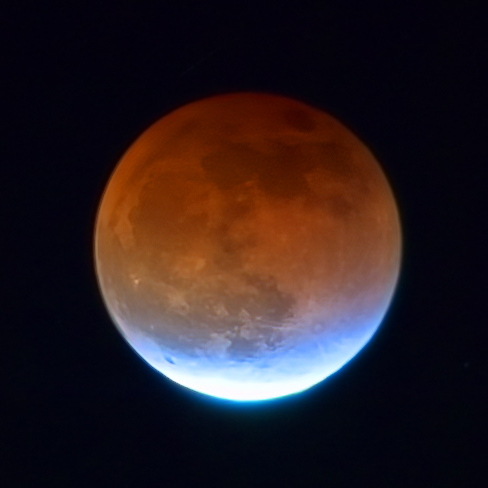a lunar mare (latin for sea) is a large smooth dark region on the surface of our moon. early astronomers thought they resembled seas on the earth, hence the name.
mare crisium caught my eye, emerging from lunar night on a 3 day old waxing crescent moon:
 |
Mare Crisium, Sea of Crisis
5/4/2022 03:01 UTC |
mare crisium is a realtively small lunar mare on the northeast quadrant of the moon. it can be easily seen on the full moon:
 |
mare crisium is the dark circle top
in front of the "bunny rabbit's ears" |
 |
| mare crisium, the eye of the crescent upper left |
lunar maria are thought to have been formed by huge asteroid impacts on the young moon which had a thin crust over hot magma. the huge asteroids created large craters and cracked the crust. liquid magma then flowed in--filling the craters and cooling to a smooth surface. so at one point, they sort of were seas. the high concentration of iron in the magma darkens the surface.
refs:
https://lovethenightsky.com/how-did-lunar-maria-form/
https://www.nasa.gov/mission_pages/LRO/multimedia/lroimages/lola-20100702-crisium.html
https://www.glyphweb.com/esky/surface/marecrisium.html
image details:
camera ZWO ASI 290mm IR pass filter 850
celestron 11" Edge HD, no barlow
880 frames @16 fps 6.928 ms gain 351
5/4/22 ~3 AM UTC (5/3/22 8 pm local)
East Bluff, CA
poor seeing, IR filter helped
full disk
11/27/12
FS 102, SX H9 (probably)
crescent
5/26/2006
FS 102, SX H9 (probably)


















